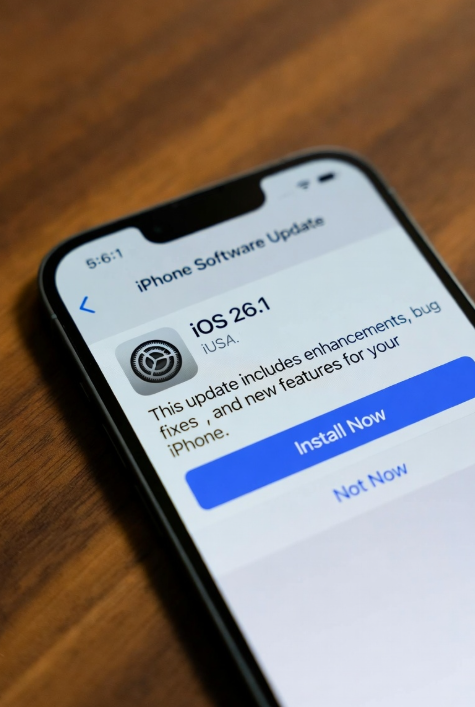If you’re building AI agents for your business or just keeping tabs on where enterprise AI is heading, yesterday’s announcement from Microsoft should have your full attention. The tech giant just made GPT-5.1 available in Microsoft Copilot Studio, and honestly, it’s not the flashy consumer launch you might expect. Instead, it’s a calculated move that tells us everything about where Microsoft thinks AI agents are going.
Let me walk you through what’s actually happening here, what it means for businesses, and why this matters more than the usual AI hype cycle would suggest.
What Actually Launched
On November 12, 2025, Microsoft quietly announced that GPT-5.1 is now accessible within Microsoft Copilot Studio. But here’s the catch—and it’s an important one—this isn’t a full-blown production release. Microsoft is rolling it out as an “experimental model” exclusively for U.S. customers who are using early release cycle Power Platform environments.
Think of it as a controlled test drive rather than handing everyone the keys. Microsoft’s being pretty upfront about this: they want companies to kick the tires, test it against real business scenarios, and compare it with existing models before anyone goes all-in for production deployments.
The announcement came from Ami Shastri, Principal Product Manager for Copilot Studio, who emphasized that this release is running in lockstep with OpenAI’s own GPT-5.1 launch. That same-day availability is becoming Microsoft’s signature move—getting the latest AI tech into enterprise hands as fast as possible while maintaining their security and compliance framework.
What Makes GPT-5.1 Different
So what’s new with GPT-5.1? According to Microsoft, the standout feature is “improved adaptability in thinking time” across both chat and reasoning tasks. That might sound like marketing speak, but it’s actually pointing to something genuinely useful.
What this means in practice is that the model can now dynamically adjust how much computational horsepower it throws at a problem. For straightforward questions or routine interactions, it stays quick and responsive. But when you throw something complex at it—maybe a multi-step business process analysis or a tricky reasoning challenge—it can slow down and think harder about the problem.
This is the natural evolution of what we saw with GPT-5, which Microsoft rolled out back in August 2025. That release introduced the concept of real-time model routing, where the system automatically picks between a high-throughput model for speed and a deep reasoning model for complexity. GPT-5.1 appears to refine this balancing act even further, making the transitions smoother and the reasoning more adaptive.
The Bigger Picture: Microsoft’s AI Agent Strategy
Here’s where things get interesting if you zoom out a bit. Microsoft isn’t just dropping new AI models into products and calling it a day. They’re systematically building an entire ecosystem for enterprise AI agents through Copilot Studio, and GPT-5.1 is just the latest piece of that puzzle.
Copilot Studio started life as the successor to Power Virtual Agents, but it’s evolved into something much more ambitious. It’s now Microsoft’s comprehensive platform for building, testing, and deploying AI agents that can work across Microsoft 365, connect to business data through Dataverse, and integrate with countless external systems.
What makes this approach powerful is that you’re not just getting access to a fancy AI model. You’re getting a complete production environment that includes visual authoring tools for building conversation flows, built-in connectors to retrieve company knowledge, and proper governance controls that enterprise IT teams actually care about.
When Microsoft announced GPT-5 in Copilot Studio back in August, they gave developers the choice between GPT-5 Auto (which lets the system pick the right model variant automatically), GPT-5 Chat (optimized for conversational throughput), and GPT-5 Reasoning (for complex problem-solving). Now with GPT-5.1 joining that lineup, there’s even more flexibility for tailoring agents to specific business needs.
Why Experimental Access Matters
Let’s talk about why Microsoft is being so cautious with this rollout. Experimental access might sound like a limitation, but it’s actually a smart way to handle cutting-edge AI in enterprise settings.
First, it gives organizations a chance to do real testing without the pressure of production deadlines. You can build test agents, run them through realistic scenarios with actual business data, and see how GPT-5.1 handles your specific use cases compared to GPT-4.1, GPT-5, or whatever model you’re currently using.
Second, it protects companies from rushing into production with technology that hasn’t been fully vetted in their environment. Microsoft is explicitly recommending non-production testing while they complete their own evaluation gates. This matters because businesses don’t just care about whether an AI is clever—they need to know it’s reliable, secure, and won’t embarrass them in front of customers.
The early release cycle Power Platform environments serve as sandboxes where IT teams can experiment without risking their production systems. It’s the AI equivalent of a test kitchen, where you can try new recipes before serving them to guests.
What This Means for Businesses Building AI Agents
If you’re a business that’s already using Copilot Studio or thinking about building AI agents, here’s what you should be paying attention to.
The GPT-5.1 release signals that adaptive reasoning is becoming table stakes for enterprise AI. The days of one-size-fits-all AI models are ending. Modern AI agents need to recognize when a simple answer will do and when they need to dig deeper. For customer service scenarios, this could mean instantly answering simple questions while taking more time to work through complicated support issues properly.
For internal business processes, think about an AI agent that handles routine expense approvals quickly but applies more careful analysis to unusual requests or edge cases. That’s the kind of practical value this adaptive thinking delivers.
Microsoft’s also making it clear that they’re committed to rapid iteration. We saw GPT-5 launch in August, GPT-4.1 become the default for new agents in October, and now GPT-5.1 arriving in November. That’s three significant model updates in four months. If you’re building on this platform, you need systems that can evaluate and adopt new models quickly, not rebuilding from scratch each time.
The experimental label shouldn’t scare you off—it should make you lean in. Companies that start testing GPT-5.1 now will be ahead of the curve when it moves to general availability. You’ll understand its strengths and limitations in your specific context, have prompts and workflows optimized for it, and be ready to deploy when Microsoft gives the green light for production use.
The Technical Reality Check
Let’s be honest about some realities here. Access to GPT-5.1 comes with practical constraints that matter for planning purposes.
Right now, this is U.S.-only and limited to early release cycle environments. If you’re not already set up with that infrastructure, you can’t just flip a switch and start using GPT-5.1 tomorrow. That might frustrate some people, but it’s part of Microsoft’s staged rollout approach.
The experimental status means you absolutely should not be putting this into production agents that customers or employees depend on. Test environments only. Microsoft’s been crystal clear about this, and ignoring that guidance would be asking for trouble.
There’s also the question of cost and rate limits. While Microsoft hasn’t published specific pricing for GPT-5.1 yet, it’s safe to assume it won’t be cheaper than existing models. More capable models typically cost more to run, which means you need to think carefully about when the extra capability is worth the extra cost.
The multi-model landscape is getting complicated too. Between GPT-4.1, GPT-5 Auto, GPT-5 Chat, GPT-5 Reasoning, and now GPT-5.1, there are a lot of options to evaluate. That flexibility is powerful, but it also means more testing and decision-making for teams building agents.
How This Fits Into the Broader AI Competition
Zooming out to the industry level, Microsoft’s rapid integration of OpenAI’s latest models is a major competitive advantage. While other companies are still figuring out how to productize AI, Microsoft is shipping new model versions into enterprise products within hours of OpenAI announcing them.
This matters because the AI space moves incredibly fast. Model capabilities that seemed cutting-edge six months ago are baseline expectations today. Companies that can’t iterate quickly will fall behind, and Microsoft is demonstrating they can move at the speed AI demands.
The Copilot Studio approach also highlights Microsoft’s broader strategy: make AI accessible to citizen developers, not just coding experts. The visual authoring tools, pre-built connectors, and low-code/no-code philosophy means business analysts and domain experts can build useful AI agents without needing a computer science degree.
Compare that to building custom AI solutions from scratch, which requires data science teams, MLOps infrastructure, and months of development time. Microsoft’s betting that most companies would rather buy a platform that works and focus on their actual business problems.
What Should You Actually Do With This Information
If you’re already using Copilot Studio, request access to early release cycle environments if you don’t have it yet. Start planning test scenarios that would benefit from adaptive reasoning. Identify business processes where the distinction between fast simple handling and deeper complex reasoning would add value.
If you’re evaluating AI agent platforms, put Copilot Studio on your shortlist if it isn’t already there. The combination of rapid model updates, enterprise features, and Microsoft’s ecosystem integration is hard to match. Even if GPT-5.1 specifically doesn’t matter to your use case, the velocity of innovation does.
If you’re building production agents today, design them with model flexibility in mind. Don’t hardcode assumptions about model behavior. Build evaluation frameworks that can test new models against your use cases quickly. The pace of model releases isn’t slowing down—it’s accelerating.
Insights
Microsoft’s release of GPT-5.1 in Copilot Studio isn’t a revolution—it’s evolution in action. It’s one more step in the steady march toward AI agents that can handle real business complexity with the kind of adaptive intelligence that humans take for granted.
The experimental label and limited rollout might not generate headlines, but they represent something important: Microsoft taking enterprise AI seriously enough to do it right rather than fast. They’re giving businesses the tools to test, evaluate, and prepare before production deployments.
For companies betting on AI agents as part of their digital transformation, this release is a reminder that the technology is maturing quickly but thoughtfully. The winners won’t be the ones who rush to production with the latest shiny model. They’ll be the ones who build robust agent frameworks that can take advantage of continuous AI improvements while maintaining reliability and governance.
GPT-5.1 is available now for testing. The real question isn’t whether it’s better than what came before—of course it is. The question is whether your organization is ready to take advantage of what adaptive AI agents can do, and whether you have the infrastructure and processes to evolve as quickly as the technology does.
That’s the real challenge, and that’s where Microsoft is placing its bet—not just on better models, but on making enterprise AI that actually works in the messy reality of business operations. Time will tell if they’re right, but based on what we’re seeing with GPT-5.1, they’re at least asking the right questions.



